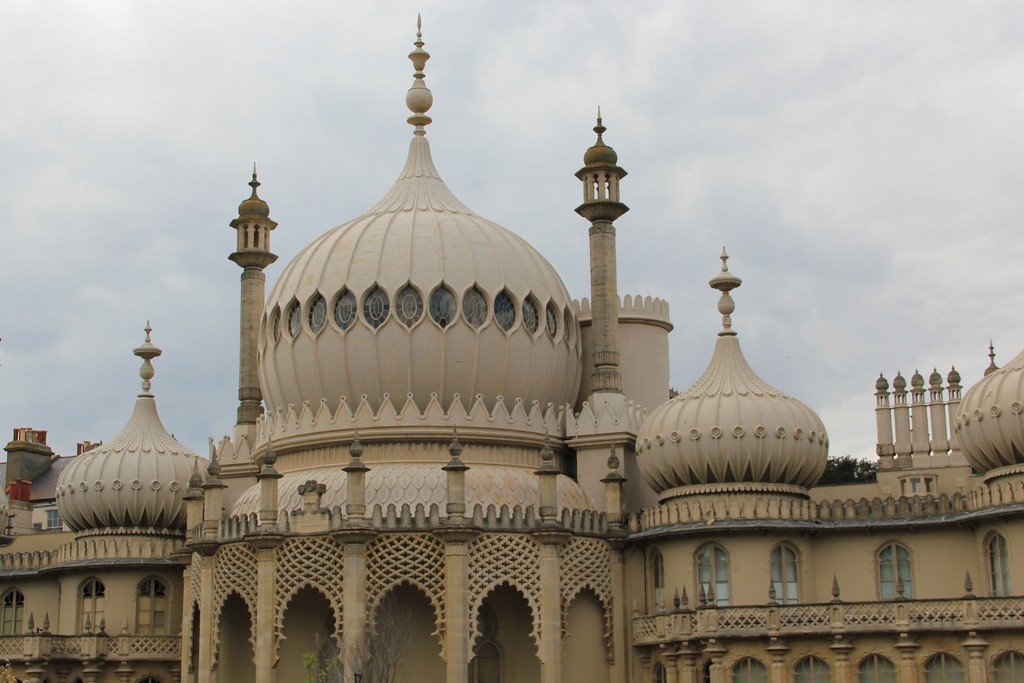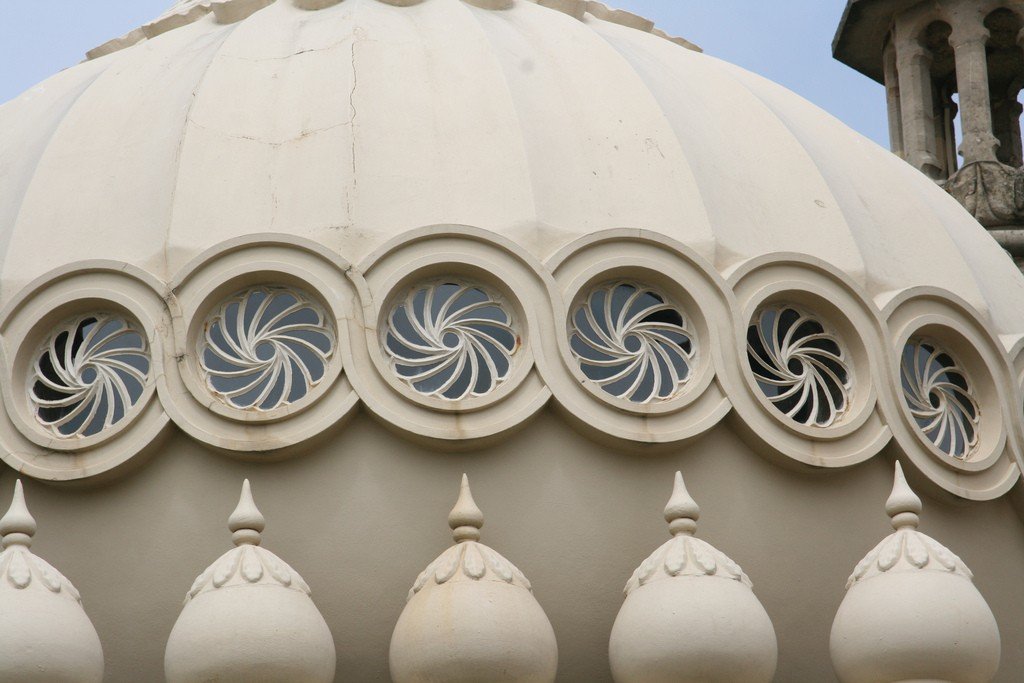Royal Pavilion
The Royal Pavilion is the former seaside residence of the Kings of England, located in the city of Brighton, in the south of the United Kingdom. The luxurious palace complex is a fine example of eclecticism. It blended the traditions of Indian, Moorish and Chinese architecture, which today is called the Indo-Saracenic style.










Video: Royal Pavilion
ContentsHighlights
The interiors of the Royal Pavilion are like its facades. Luxury is at the top of the agenda here, while convenience and functionality are put on the back burner. Only some furniture and some dishes have survived from the original interiors. Everything else was restored after World War II, thanks to the painstaking work of restorers.
.Unusual forms distinguish the Royal Pavilion among the classical and austere buildings of Brighton in the tradition of Georgian and Victorian styles. The ornate facades and decor look very colorful and attract many tourists to Brighton. The best time to visit the Royal Pavilion is mid-summer, when many beautiful flowers are blooming in the surrounding gardens.
.History of the Royal Pavilion
The Prince of Wales and future King George IV first visited Brighton in 1783 to rest and, on the advice of his doctors, to be treated by the sea. At first the Prince stayed at a residence belonging to the Duke of Cumberland. Rest at seaside resorts was becoming fashionable, so the coast came to a lot of representatives of the high society.
.
In the seaside town of the prince attracted not only a good climate and healing sea breezes. He went here to meet secretly with his beloved Mrs. Fitzgerbert.
The original site of the Royal Pavilion was a neoclassical mansion erected in 1787 and designed by architect Henry Holland. In 1815, the Prince invited the renowned British architect John Nash to remodel the seaside villa into a royal residence. Nash was known as a master of the British Empire or ‘Regency style’. He took on the task with passion and within seven years had changed the old mansion beyond recognition.
.
In the early 19th century, the “colonial style” became fashionable, so ethnic motifs were used in the architecture of the Royal Pavilion. Nash decorated the structure with chimneys that resembled Muslim minarets. He built light terraces around the building, erected onion-shaped heads and made the side towers look like Buddhist pagodas.
King William IV of England, who ruled after George IV, always lived in the Royal Pavilion when he came to Brighton. Queen Victoria, who came to power, changed the tradition. She visited the seaside town only once, abandoned the old pavilion and made the Isle of Wight her residence. The original structure was taken over by the town and used for festivals and celebrations.
.
During the years when World War II was underway, the large building was given to a military hospital. In the post-war period, the city and national government spent a lot of money to recreate the architectural monument in its original form.
.Visitor information
The Royal Pavilion operates as a museum. It is open to tourists from October to March from 10.00 to 17.15, and from April to October from 9.30 to 17.45. Note that the ticket office closes 45 minutes before the pavilion closes. Photography is not allowed inside the building.
.An adult ticket to the Royal Pavilion costs £11.70, £10.35 for students and pensioners, and £6.75 for children aged 5-15. You can buy Royal Pavilion tickets online, with a 10% discount, on the official Brighton Museums website http://brightonmuseums.org.uk/royalpavilion. If you come on the tour with your smartphone, you can download a free audio guide to it.
.How to get there
The Royal Pavilion is located between Old Steine and the North Line, close to the coast.
.The city of Brighton is 96 kilometers from London. It is more convenient to reach it by trains that depart from “Victoria” and other stations of the English capital. In addition, tourists can get to the seaside city in two hours by shuttle buses.
.